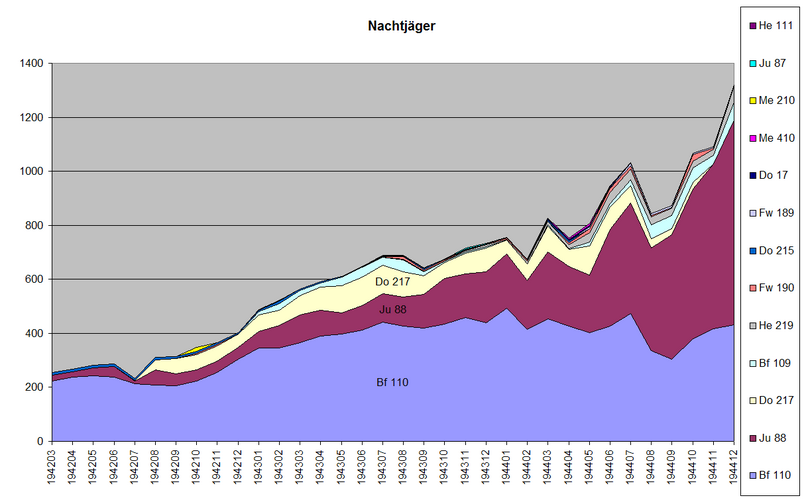Hi Hood,
I think he was hoping too much that the Ta 154 would replicate the Mosquito's success for the Luftwaffe too...
A bigger problem seems to have been the small cockpit of the Ta 154, which made installation of electronics difficult and addition of a third crew member a challenge
...which led to the problem of it being too small, how the pilot could be expected to scan the sky with two stonking great Jumo 213s either side of him is a mystery.
stressed in a war economy were purpose-built types were considered a poor use of resources
Maybe but Germany's war economy had dozens of cases of goldplating, churning out Tigers and Panthers was hardly cost-effective for example. I guess it really depends if the Ju-88/388 lineage was considered adequate enough to meet the need, and it can't be disputed that the numerous Luftwaffe conversions did the job in some measure and RAF losses could be severe to nightfighters.
Well, the Ta 154 was originally conceived as a high-speed bomber, not a night fighter, so the poor visibility probably wasn't seen as a problem. There was also the Ta 154A-4, Ta 154C and Ta 254 line of development with a revised nose in which the pilot sat higher (and the main armament was mounted below the cockpit floor). However, even in that configuration, visibility was a still limited, especially compared to the He 219's very wide field of view.
I wouldn't necessarily say Milch was wrong in considering the He 219 overly expensive in its role, but on the other hand, it was available, and it was effective. Was the Ju 88 lineage as effective, and how long would it have stayed so? That's probably a question that could only be answered by having a long and hard look at operational statistics.
Heinkel argued in mid 1944 that the He 219, when fitted with the same engines, was 30 km/h faster than the Ju 388. It was also already in production, while the Ju 388 was still being introduced to the production lines, and He 219 production could be ramped up quicker than Ju 388 production according to Heinkel. Against the Ta 254, which by that point apparently had replaced the Ta 154 in Luftwaffe planning, Heinkel argued that the Focke-Wulf type's introduction time was uncertain, and that the He 219 could be switched over to wooden wing with a low-risk development his design office had already considered, and which would reduce the aluminium requirements for the He 219 from 3900 to 1400 kg. His presentation includes a weight breakdown, and a bit to my surprise, about one third of the fuselage structural weight consisted of steel. For the wings, it was only 20% steel, and 80% aluminium, roughly. (I'm relying on the reproduction of Heinkel's presentation in Luftfahrt International 16 for all of this.)
So, maybe Milch's reservations against the He 219 were misguided, even if the type might have been more expensive than the potential competitors. However, in the end it wasn't up to Milch to make a decision anymore, as he had been removed from his post, and other people were calling the shots.
Regards,
Henning (HoHun)

